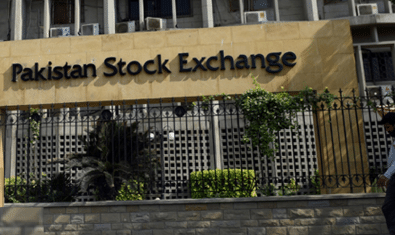Pakistan’s external financing needs will likely reach an unprecedented level of $35 billion if the international commodity prices do not decline, according to a report by renowned economist Dr. Hafeez Pasha.
The country is close to a financial crisis once again due to the rise in commodity prices after June 2021 following the recovery of the world economy and more recently since the start of the Russia-Ukraine war and the exponential increase in external debt repayments.
The external debt servicing is likely to be around $12 billion during the current fiscal year, which is why Pakistan’s annual financing requirement will reach almost $30 billion in 2021-22. If the prices of commodities do not start falling, the inflow of funds required in 2022-23 will rise to $35 billion, Dr. Pasha explained.
The political situation in the country had led to a de facto suspension of the Extended Fund Facility (EFF) program by the International Monetary Fund (IMF). Dr. Pasha added that international credit rating agencies like Bloomberg are, for the first time, highlighting the growing risk of a default that Pakistan faces in its external payment obligations.
The coalition government will have to implement very strong fiscal, monetary, and other policies to restore Pakistan’s ability to fully meet these large external debt repayment obligations and sustain the level of essential imports.
Dr. Pasha also mentioned that the PTI government had inherited the largest-ever current account deficit of over $19 billion in its first year in office. The reserves had plummeted to $9 billion by December 2018 and the economic situation had forced the government to go to the IMF. Following the commencement of the IMF program, the policy rate of the State Bank of Pakistan (SBP) was raised from seven to 13.25 percent.
The precipitous fall in the prices of commodities on account of the pandemic had greatly helped to curtail the current account deficit which had fallen sharply to $4.4 billion in 2019-20 and only $ 1.9 billion in 2020-21. The reserves had increased to a healthy level of $18.7 billion by June 2021, Dr. Pasha pointed out.
The prices of commodities started rising sharply from April 2021 onward and have since gone up by over 60 percent. Consequently, the current account deficit has risen once again to a very high level of $12 billion in the first eight months of 2021-22, the economist explained.
According to the report, the external debt to the GDP ratio declined marginally during the tenure of the Pakistan Peoples’ Party’s (PPP) government and has risen thereafter, as per the SBP. The very critical ratio of the external debt as a percentage of exports has risen to an extremely high level — from 192 percent in 2007-08 — with a doubling to 388 percent in 2020-21. Fortunately, although low, the reserves as a percentage of the external debt have shown a rising tendency since 2012-13.
The average GDP growth rate has been relatively low from 2008-09 to 2020-21 while the inflation rate has been relatively high. Very high levels of power load-shedding and acts of terrorism played a major role in restricting private investment and constraining productive activities until 2015-16. Subsequently, the pandemic caused substantial damage to lives and livelihoods after March 2020.
Each of the three governments has made efforts to sustain the economy in difficult conditions.
The policy of the Pakistan Muslim League-Nawaz (PML-N) regime to keep the inflation rate very low, especially before the elections, had led to a 30 percent jump in imports from 2015-16 to 2017-18, as per the report.





















